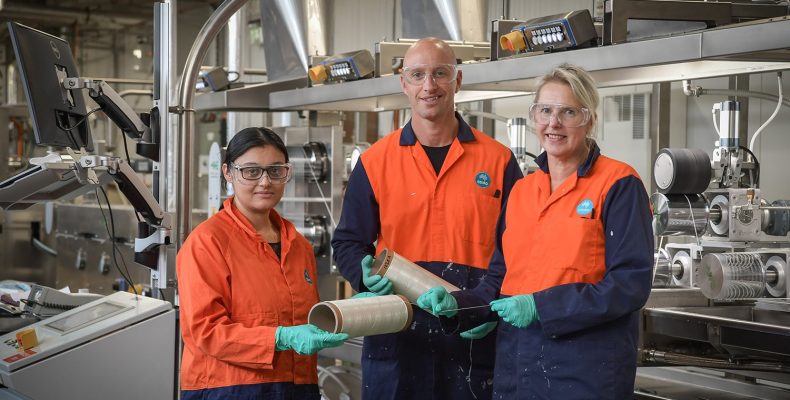Breakthrough development of next-generation carbon fibre by cluster members Carbon Nexus and CSIRO has received international attention, with a magazine showcase feature commending the Geelong-based innovation.
Ohio-based CompositesWorld, which boasts more than 30,000 subscribers and over 280,000 online page views each month, commended the work in a feature as part of its “what’s happening in fibre-reinforced composites” global research. “The whole carbon fibre process chain is being revolutionized at Geelong,” CompositesWorld notes.
CSIRO focuses on the first steps of carbon fibre production, including polymerization and spinning of PAN precursor on its wet-spinning line, while Carbon Nexus focuses on the last steps, including oxidation and carbonization.
CSIRO researchers aim to control the molecular structure and processing of polyacrylonitrile (PAN) precursor to maximise carbon fibre strength, which is mainly limited by defects in the fibre surface and microstructure and impurities in the precursor.
This will result in higher quality and performance, yet more affordable carbon fibres for the market, which is growing by 10% a year.
CSIRO is aiming for a 20% gain in strength in aerospace-grade carbon fibre and is producing bespoke fibres for specific end applications by engineering the PAN and carbonized product. Six different precursor formulations are being tested and will be “carbonised” by Carbon Nexus, with results possible by the end of this year.
The magazine notes that both CSIRO and Carbon Nexus are based in Geelong and “working with the local composites industry as part of the Advanced Fibre Cluster Geelong, which includes well-known composites manufacturers such as Carbon Revolution and Quickstep — also located on the Waurn Ponds campus — as well as GMS Composites, Sykes Racing, ACS Composites and others.”
PAN production accounts for half of carbon fibre’s cost but 70-90% of its properties.
At CSIRO, a polymer solution called dope is used to spin PAN precursor fibre. Just as pasta dough is kneaded and then pressed through a die to make long, thin strands of spaghetti, dope is mixed and then coagulated and spun through multi-holed spinneret to produce thousands of separate strands of very fine PAN fine fibre which are washed, stretched on rollers, stabilized in a series of solutions, steamed and dried before being spooled for the carbonization line at Carbon Nexus.
Reversible Addition-Fragmentation chain Transfer (RAFT) technology is used by CSIRO to achieve polymer chains of almost the same length, helping with weight distribution.
CSIRO’s CarbonSpec tool is used to test the fibres produced and predict carbon fibre properties.
“Only 10% of the theoretical strength for carbon fibre has been achieved so far,” the article quotes Andrew Abbott, CSIRO team leader carbon fibre, as saying. “
“We’re better controlling the molecular weight and increasing it while lowering the viscosity, which can produce stronger carbon fibre,” says Mr Abbott.
May 2020
